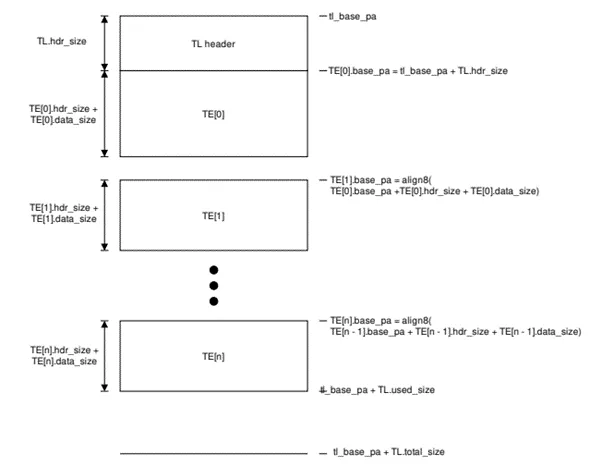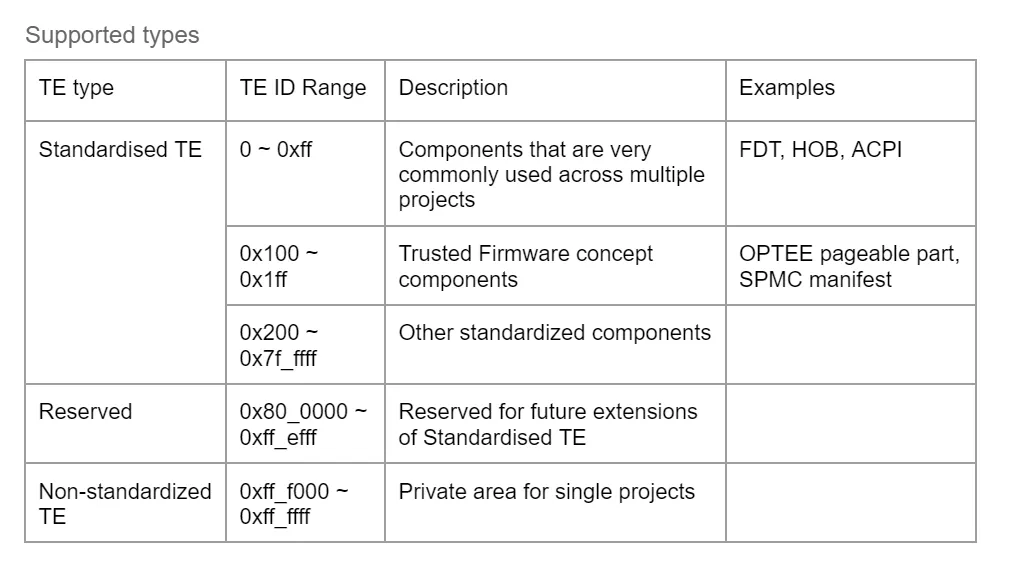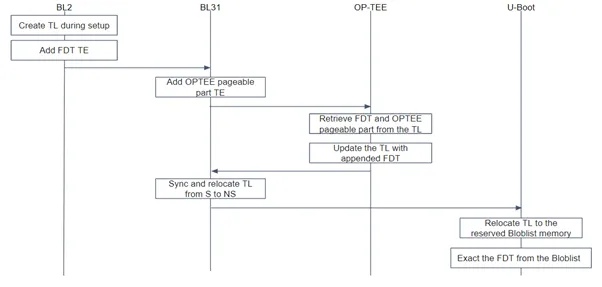Introduction
When booting devices nowadays, a series of bootloader components work together before launching the OS.
During platform initialization, any firmware boot stage can produce information that will be consumed by a later-stage component, and the traditional mechanisms for handing off such information are platform-specific and potentially incur significant burdens for code maintenance.
The Firmware Handoff project and the Firmware Handoff specification v0.9 aim to standardize how information is propagated across different firmware boot stages in an architectural-agnostic manner.
They were designed as an alternative data handoff structure and aimed to be lighter. DeviceTrees are sometimes used for the same purpose. The DeviceTree is backed by a specification though, and it originally aimed to describe non-discoverable hardware. Hijacking it with project-defined values and creating ABIs across different bootloaders wasn’t ideal.
To address this issue, the Firmware Handoff specification defines a universal and lightweight data handoff structure by introducing Transfer List (TL) and Transfer Entries (TE), enabling simple C structures within a tagged data list.
Transfer-List definition
TL defines a header followed by a sequence of TEs, all of which are contiguous in physical address space. Each TE represents the information produced by a bootloader and is intended to be consumed by a component running later, which needs to consume this information.

Figure 1: Transfer list layout
Furthermore, the Firmware Handoff specification outlines a straightforward, extensible, and easily accessible registration mechanism by defining multiple TE types and TE ID ranges, enabling communities to register new TEs for various use cases without barriers.

Table 1: Transfer Entry types and ID ranges
Enabling Transfer-List
The Linaro Edge Computing group (LEDGE) has added this unified API in a variety of firmware components. Functionality includes
- Creating and initializing a TL from memory
- Populating a TL from boot arguments
- Relocating a TL to a specific memory address
- Checking the validity of a TL header
- Verifying the checksum of a TL
- Retrieving the payload data from a TE
- Adding a TE into a TL
- Looking up a TE from a TL with a specified tag ID
TL compliant with the Firmware Handoff specification v0.9 is now supported in TF-A, OP-TEE, and U-Boot and the patches below are merged upstream.
TF-A patches (included in release v2.10):
- feat(handoff): introduce firmware handoff library
- feat(qemu): implement firmware handoff on qemu
- feat(handoff): enhance transfer list library
- feat(optee): enable transfer list in opted
- feat(qemu): enable transfer list to BL31/32
OP-TEE patches (Included in release v4.1.0):
- core: add memory area for transfer list
- core: add transfer list API
- core: add support for transfer list
U-Boot (merged after 2024.04)
- [Support Firmware Handoff spec via bloblist [v5]](https://patchwork.ozlabs.org/project/uboot/list/?series=388375\&state=\*)
- [Handoff bloblist from previous boot stage [v8]](https://patchwork.ozlabs.org/project/uboot/list/?series=393473\&state=\*)
To turn it on you have to
- Build TF-A with
TRANSFER_LIST=1andSPD=opteed. - Enable the config options in U-Boot building U-Boot
Unset
CONFIG_BLOBLIST=y
CONFIG_BLOBLIST_ADDR=<bloblist_address> (e.g. 0x40004000)
CONFIG_BLOBLIST_SIZE=<bloblist_max_size> (e.g. 0x4000)
Build OP-TEE (with OPTEED) with
Unset
CFG_TRANSFER_LIST=y
CFG_MAP_EXT_DT_SECURE=y
How the handoff works
The diagram below illustrates how a TL, containing two entries (TEs) (FDT and OPTEE pageable part), is generated, handed off, and consumed between different firmware components.

Figure 2: Transfer List handoff between boot stages
- BL2 creates the TL and adds FDT as a TE then hands it off to BL31
- BL31 verifies the TL and adds OP-TEE pageable part address as a TE, then hands it off to OP-TEE (BL32)
- OP-TEE verifies the TL and loads the OP-TEE pageable part by exacting the address from the TE, then appends the FDT TE by adding reserved memory nodes and finally hands the TL off to BL31
- BL31 verifies the TL and relocates it to the Non-Secure memory region.
- U-Boot (BL33) verifies the TL, relocates it to the reserved Bloblist memory, and extracts the FDT that contains all the information the platform needs
Platform support
All of the platforms running U-Boot can make use of the transfer list. TF-A support is only available in QEMU though. If you have questions and want to enable this in your platform, contact us at support@linaro.org.
To find out more about this topic, make sure to check out the session Recent implementations/refactoring in TF-A at the upcoming Linaro Connect Madrid 2024.

